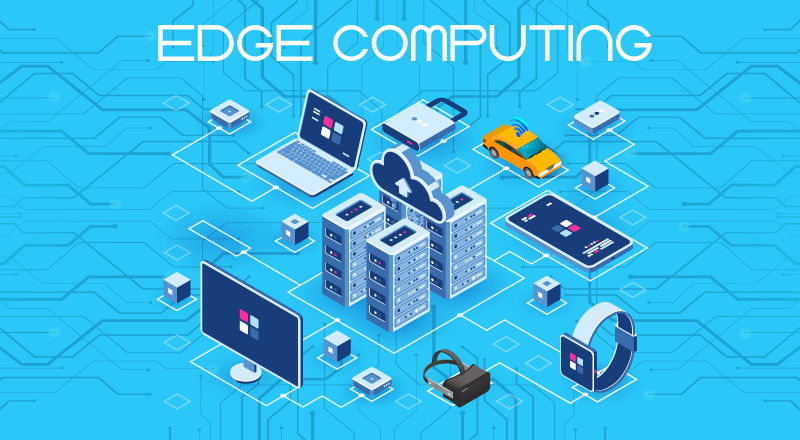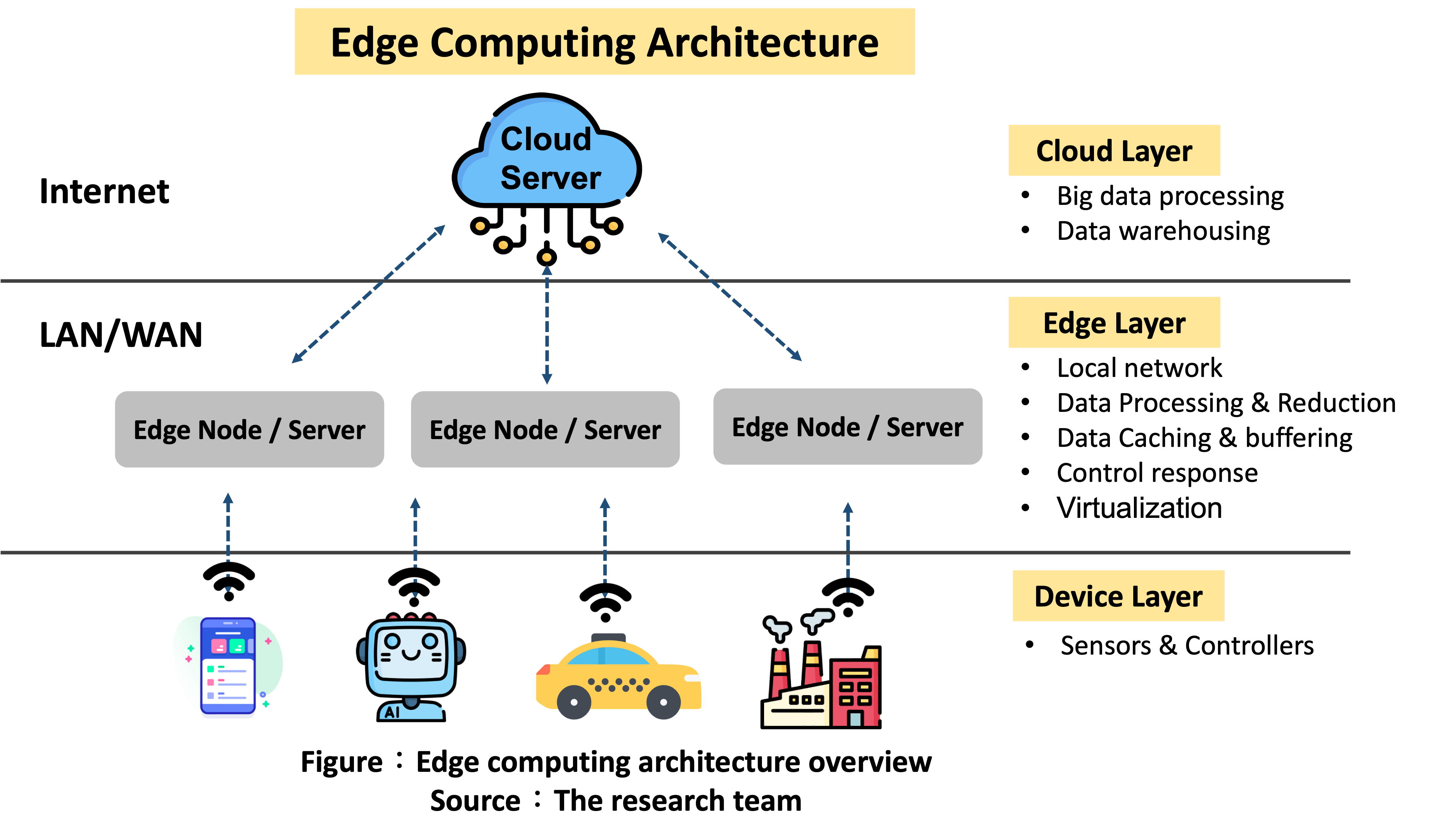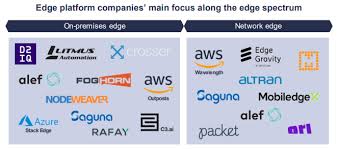Unleashing the Power of Edge Computing: Revolutionizing the Digital Landscape

Introduction
I. Advancements in Edge Computing
- Internet of Things (IoT) Integration: The integration of IoT devices with edge computing has revolutionized data processing and decision-making capabilities at the edge. IoT devices, equipped with sensors and actuators, enable the collection of real-time data from various sources, such as environmental sensors, smart appliances, industrial equipment, and wearable devices. This data can be processed locally at the edge, reducing the need for constant data transmission to the cloud and enabling faster response times.
- Miniaturization and Mobility: Advancements in hardware technology have led to the miniaturization of computing devices, making it possible to deploy edge computing resources in small form factors. Edge devices, such as microservers, gateways, and edge routers, have become increasingly compact and energy-efficient, enabling their deployment in diverse environments, including remote locations, vehicles, drones, and mobile devices. This mobility allows for edge computing capabilities to be extended to scenarios where real-time processing is critical, such as autonomous vehicles, real-time monitoring, and disaster response.
- Machine Learning at the Edge: Edge computing empowers the deployment of machine learning algorithms directly on edge devices, enabling real-time data analysis and immediate actions without the need for constant data transmission to the cloud. This capability is particularly valuable in applications where low latency is crucial, such as real-time object detection, anomaly detection, and predictive maintenance. Machine learning models deployed at the edge can continuously learn and adapt based on local data, resulting in faster insights and improved decision-making capabilities.
- Edge Data Processing and Filtering: Edge computing allows for data processing and filtering at the edge, reducing the volume of data that needs to be transmitted to the cloud. This approach is beneficial in scenarios where the generated data exceeds the available network bandwidth or where transmitting all the data to the cloud is unnecessary. Edge devices can perform initial data analysis, filtering, and aggregation, transmitting only relevant information or summarized results to the cloud, reducing network congestion and optimizing bandwidth utilization.
- Edge Storage and Caching: Edge devices can also provide local storage and caching capabilities, enabling quick access to frequently accessed data and reducing latency. This is particularly useful in applications that require rapid retrieval of data, such as video streaming, content delivery networks (CDNs), and real-time analytics. Edge storage and caching mitigate the reliance on distant data centers, improving response times and user experience.
- Edge Device Collaboration: Edge computing enables collaboration among edge devices, allowing them to share resources, exchange data, and collectively perform complex computations. By leveraging peer-to-peer communication and distributed computing techniques, edge devices can collectively solve problems that may be challenging for a single device, such as collaborative sensing, distributed data processing, and collective decision-making. This collaborative approach enhances scalability, resilience, and fault tolerance in edge computing environments.
- Edge Device Autonomy: Edge devices can possess autonomy in decision-making and execution, enabling them to perform localized tasks independently, even in the absence of cloud connectivity. This autonomy is critical in scenarios where real-time operations are necessary, such as autonomous systems, drones, and remote monitoring. Edge devices can make immediate decisions based on predefined rules, machine learning models, or local policies, reducing dependency on central cloud infrastructure and enabling offline operations.
- By leveraging the integration of IoT devices, advancements in miniaturization and mobility, machine learning capabilities, data processing, and filtering, storage and caching, collaboration among edge devices, and edge device autonomy, edge computing has evolved into a powerful paradigm that brings computation closer to data sources, enabling faster insights, real-time decision-making, and localized control.
II. Advancements in Edge Computing
- Internet of Things (IoT) Integration: The integration of IoT devices with edge computing has revolutionized data processing and decision-making capabilities at the edge. These devices, equipped with sensors and actuators, collect real-time data and enable localized decision-making without relying heavily on cloud infrastructure.
- Miniaturization and Mobility: Advancements in hardware technology have led to the miniaturization of computing devices, making it possible to deploy edge computing resources in small form factors. Mobile edge computing (MEC) extends this concept further by enabling edge computing on mobile devices, such as smartphones and tablets.
- Machine Learning at the Edge: Edge computing empowers the deployment of machine learning algorithms directly on edge devices, enabling real-time data analysis and immediate actions without the need for constant data transmission to the cloud. This is particularly beneficial in applications requiring rapid decision-making and offline capabilities.
- OpenNESS: OpenNESS is an open-source platform that facilitates the deployment and management of applications at the network edge. It provides a unified interface for orchestrating various edge computing resources, enabling seamless integration and collaboration between edge and cloud environments.
- Kubernetes and KubeEdge: Kubernetes, a popular container orchestration platform, has gained prominence in the edge computing landscape. KubeEdge extends Kubernetes capabilities to the edge, enabling efficient deployment, management, and scaling of containerized applications on edge nodes.
- Apache OpenWhisk: Apache OpenWhisk is a serverless computing framework that supports edge deployments. By providing an event-driven execution model, OpenWhisk enables developers to deploy and run functions at the edge, optimizing resource utilization and reducing latency.
- Azure IoT Edge: Microsoft Azure IoT Edge is a platform that enables the deployment of cloud capabilities on edge devices. It facilitates the processing and analysis of IoT data closer to its source, ensuring faster response times, improved security, and reduced bandwidth requirements.
- AWS Greengrass: AWS Greengrass is Amazon’s edge computing platform that extends AWS services to edge devices. It enables local data processing, messaging, and management, allowing organizations to build and deploy applications that span across the cloud and the edge seamlessly.
- Harnessing the Power of Ultra-Low Latency: The advent of 5G networks with ultra-low latency capabilities significantly enhances the potential of edge computing. By minimizing network delays, 5G enables real-time applications, such as autonomous vehicles and remote surgery, to leverage the edge for immediate decision-making and reduced dependency on centralized infrastructure.
- Enabling Real-Time Applications: 5G’s high bandwidth and low latency enable the deployment of real-time applications at the edge. This is particularly crucial for applications requiring immediate response times, such as augmented reality (AR), virtual reality (VR), and video analytics.
- Dynamic Network Slicing for Enhanced Performance: 5G’s network slicing capability allows operators to allocate dedicated virtual networks for specific edge computing applications, ensuring optimal performance, security, and resource allocation. This dynamic network slicing empowers edge computing to cater to diverse use cases simultaneously.
- Hybrid Architectures: Edge computing and cloud computing are not mutually exclusive but rather complementary. Hybrid architectures leverage the strengths of both paradigms, allowing organizations to balance data processing between the edge and the cloud based on application requirements, network conditions, and cost considerations.
- Fog Computing: Fog computing is an extension of edge computing that leverages nearby fog nodes to provide a hierarchical architecture for data processing. Fog nodes, placed between edge devices and the cloud, enable localized computation and analytics, reducing latency and enhancing scalability.
- Collaborative Edge Networks: Collaborative edge networks enable the sharing of resources and information between edge devices, creating distributed computing ecosystems. This collaborative approach fosters resource efficiency, resilience, and improved decision-making capabilities, particularly in scenarios where individual edge devices have limited capabilities.
III. Real-World Applications of Edge Computing
- Intelligent Traffic Management: Edge computing enables real-time analysis of traffic data from sensors, cameras, and smart infrastructure, enabling efficient traffic management, congestion detection, and optimized routing.
- Efficient Energy Consumption: Edge devices integrated with energy management systems enable real-time monitoring and control of energy usage, optimizing consumption, and reducing costs.
- Public Safety and Surveillance: Edge computing facilitates video analytics, facial recognition, and object detection at the edge, enhancing public safety through real-time threat detection and emergency response.
- Predictive Maintenance: Edge computing enables real-time monitoring of industrial equipment and machinery, facilitating predictive maintenance and minimizing costly downtime.
- Quality Control: By performing real-time analysis of sensor data and machine vision at the edge, manufacturing processes can ensure consistent product quality and reduce defects.
- Supply Chain Optimization: Edge computing facilitates real-time tracking and monitoring of goods throughout the supply chain, enabling better inventory management, route optimization, and demand forecasting.
- Remote Patient Monitoring: Edge devices integrated with wearable sensors and medical devices enable real-time monitoring of vital signs, allowing healthcare providers to remotely monitor patients and provide timely interventions.
- Real-Time Data Analytics: Edge computing empowers healthcare facilities to perform real-time data analytics at the point of care, enabling faster diagnosis, treatment, and personalized healthcare.
- Wearable Devices and Personalized Healthcare: Edge computing facilitates the processing of data from wearable devices, such as fitness trackers and smartwatches, enabling personalized healthcare insights and interventions.
- Personalized Recommendations: Edge computing enables the analysis of customer preferences and behaviors in real-time, allowing retailers to deliver personalized recommendations and offers instantly.
- Inventory Management: By deploying edge devices with RFID and barcode scanning capabilities, retailers can perform real-time inventory management, ensuring accurate stock levels and minimizing out-of-stock situations.
- Augmented Reality (AR) Shopping: Edge computing facilitates the deployment of AR applications for immersive shopping experiences, enabling virtual try-ons, product visualization, and personalized in-store navigation.
IV. The Future of Edge Computing
- Edge-Cloud Collaborative Learning: The convergence of edge computing and cloud computing enables collaborative learning models, where edge devices contribute to the training of machine learning models hosted in the cloud. This approach improves privacy, reduces bandwidth requirements, and enhances real-time decision-making capabilities.
- Privacy-Preserving Machine Learning: Edge computing allows for sensitive data to be processed locally, minimizing the need for transmitting personal information to the cloud. Techniques like federated learning and differential privacy preserve data privacy while harnessing the power of machine learning.
- Real-Time Decision Making: Edge computing enables autonomous vehicles to process vast amounts of sensor data in real time, facilitating rapid decision-making for navigation, obstacle detection, and collision avoidance.
- Vehicle-to-Everything (V2X) Communication: Edge computing supports V2X communication, where vehicles exchange data with nearby edge nodes and other vehicles. This communication enhances safety, and traffic management, and enables advanced cooperative driving features.
- Immersive Experiences: Edge computing enables immersive experiences in gaming and entertainment by reducing latency and enhancing real-time rendering capabilities, making virtual reality (VR) and augmented reality (AR) more seamless and immersive.
- Multiplayer Real-Time Gaming: Edge computing facilitates low-latency, real-time multiplayer gaming experiences by reducing network delays and enabling rapid data processing at the edge.
- Security and Privacy Concerns: Edge computing introduces new security challenges, as distributed resources increase the attack surface. Ensuring data integrity, secure communication, and access control mechanisms become critical in edge environments.
- Standardization and Interoperability: The proliferation of edge computing frameworks and platforms calls for standardization efforts to ensure interoperability, and seamless integration, and avoid vendor lock-in.
- Infrastructure Constraints: Edge computing relies on distributed infrastructure, and ensuring reliable power, network connectivity, and maintenance in remote locations or harsh environments can pose logistical challenges.
Conclusion
As the potential of edge computing continues to unfold, it is evident that this paradigm shift in data processing and analytics holds tremendous promise across a multitude of sectors. Advancements in edge devices, frameworks, and 5G integration are fueling real-world applications in areas like smart cities, healthcare, retail, and manufacturing. Moreover, the synergy between edge computing and emerging technologies such as AI, autonomous vehicles, and immersive experiences opens up exciting possibilities for the future. However, challenges related to security, standardization, and infrastructure must be addressed to fully unlock the potential of edge computing. With its ability to bring computation closer to data sources and enable real-time decision-making, edge computing is poised to revolutionize the digital landscape and pave the way for a more connected and intelligent world.







